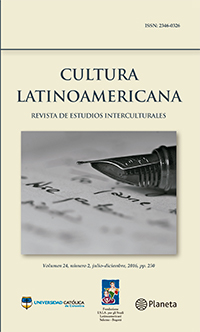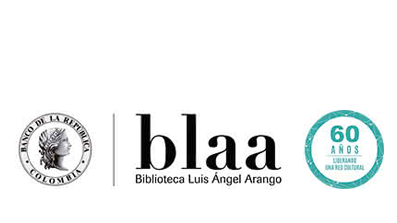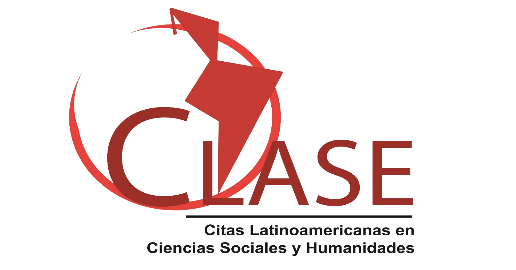Ao submeter artigos para avaliação, os autores concordam em transferir os direitos de publicação para Cultura Latinoamericana. Revista de Estudios Interculturales para publicação em qualquer meio. A fim de aumentar a sua visibilidade, os documentos são enviados para bases de dados e sistemas de indexação, e podem também ser consultados no sítio Web da Revista
Resumo
.

Referências
Berners-Lee, T., Hendler, J., & Lassila, O. (2001). The semantic web. Scientific american, 284 (5), pp. 28-37.
Bürger T. (2008). The Need for Formalizing Media Semantics in the Games and Entertainment Industry. Revista Journal of Universal Computer Science, 14 (10), pp. 1775-1791.
Bussler, C. (2003). The role of Semantic Web technology in enterprise application integration. IEEE Data Eng. Bull, 26(4), pp. 62-68.
Carbone, F., Contreras, J., Hernández, J. Z., & Gómez-Pérez, J. M. (2012). Open Innovation in an Enterprise 3.0 framework: Three case studies. Expert Systems with Applications, 39(10), pp. 8929-8939.
Cardoso, J., Hepp, M., & Lytras, M. D. (Eds.). (2007). The semantic web: real-world applications from industry, vol. 6. Springer Science & Business Media.
Casas-Bayona, A. & Ceballos, H. G. (2014, agosto). Integrating semistructured information using Semantic Technologies, An Evaluation of Tools and a Case Study on University Rankings. En DATA2014: Tercera Conferencia Internacional sobre Tecnologías y Aplicaciones de Gestión. Universidad Tecnológica de Viena, Viena, Austria.
Cataledo M. (2009, noviembre). The Semantic Web’s the Next Frontier. American Banker. Recuperado de http://www.americanbanker.com/btn/22_11/the-semantic-webs-the-next-frontier-1003476-1.html?pg=1.
Chaudhuri, S., Dayal, U. & Narasayya, V. (2011). An overview of business intelligence technology. Communications of the ACM, 54(8), pp. 88-98.
Davenport, T. H. (2014). Big Data at Work: Dispelling the Myths, Uncovering the Opportunities. Estados Unidos: Corporación Editorial de la Escuela de Negocios de Harvard.
Domingue, J., Fensel, D. & Hendler, J. A. (Eds.) (2011). Handbook of semantic web technologies. Springer Science & Business Media.
Díaz Piraquive, F. N., Aguilar, L. J., & García, V. H. M. (2009). Taxonomía, ontología y folksonomía, ¿qué son y qué beneficios u oportunidades presentan para los usuarios de la web? Universidad & Empresa, 11(16), pp. 242-261.
Feldman, R. & Dagan, I. (1995, agosto). KDT knowledge discovery in texts [Descubrimiento de conocimiento en textos KDT]. Documento presentado en la Primera Conferencia Internacional sobre el Descubrimiento de Conocimiento (KDD), 95, pp. 112-117.
Feldman, R. & Hirsh, H. (1996, agosto). Mining Associations in Text in the Presence of Background Knowledge. En Segunda Conferencia Internacional sobre Descubrimiento de Conocimiento KDD (pp. 343-346).
Feldman, R. & Hirsh, H. (1997). Exploiting background information in knowledge discovery from text. Journal of Intelligent Information Systems, 9(1), pp. 83-97.
Fleisher, C. & Bensoussan, B. (2002). Strategic and Competitive Analysis: Methods and Techniques for Analyzing Business Competition. 1a ed. Londres, Reino Unido: Pearson.
Gartner (2015, diciembre). How to monetize your customer data? Recuperado de http://www.gartner.com/smarterwithgartner/how-tomonetize-your-customer-data/.
Global Entrepreneurship Monitor & WEF (2015, enero). Leveraging Entrepreneurial Ambition and Innovation: a Global perspective on Entrepreneurship, Competitiveness and Development. World Economic Forum 2015. Recuperado de http://www3.weforum.org/docs/WEFUSA_EntrepreneurialInnovation_Report.pdf.
IBM Corporation (s.f.) What is Big Data? Bringing Big Data to the Enterprise. Recuperado de https://www-01.ibm.com/software/au/data/bigdata.
Kodratoff, Y. (1999, junio). Knowledge discovery in texts: a definition, and applications. En Simposio Internacional de Metodologías para Sistemas Inteligentes (pp. 16-29). Springer Berlin Heidelberg.
Lewis, M. P. (Ed.) (2009). Ethnologue: Languages of the World. Sixteenth edition. Dallas, Texas: SIL International.
Loh, S., Wives, L. K. & de Oliveira, J. P. M. (2000). Concept-based knowledge discovery in texts extracted from the web. ACM SIGKDD Explorations Newsletter, 2(1), pp. 29-39.
Marulanda C. E., Trujillo, M. L. & Giraldo, M. M. (2013). Análisis de la gestión del conocimiento en pymes de Colombia. Revista Gerencia, Tecnológica informática, 12(33), pp. 33-43.
Ministerio de las Tecnologías de la Información y las Comunicaciones (2010). Manual para la Interoperabilidad del Gobierno en línea. Recuperado de http://programa.gobiernoenlinea.gov.co/apc-aa-files/da4567033d075590cd3050598756222c/Marco_de_Interoperabilidad_GEL.pdf.
Nyce, C. (2007). Predictive Analytics White Paper. Recuperado de http://www.hedgechatter.com/wp-content/uploads/2014/09/predictivemodelingwhitepaper.pdf.
Polikoff, I. & Allemang, D. (2003, septiembre). Semantic technology. TopQuadrant Technology Briefing. Recuperado de https://lists.oasisopen.org/archives/regrep-semantic/200402/pdf00000.pdf.
Raghupathi, W. (2010). Data Mining in Health Care. En S. Kudyba (ed) Healthcare Informatics: Improving Efficiency and Productivity (pp. 211-223). Reino Unido: Taylor & Francis Group LLC.
Shadbolt, N., Berners-Lee, T. & Hall, W. (2006). The Semantic Web Revisited. IEEE Intelligent Systems, 21 (3), pp. 96-101.
Stephens, S. (2007). The Enterprise Semantic Web. En The Semantic Web (pp. 17-37). Estados Unidos: Springer.
Tan, A. H. (1999, abril). Text mining: The state of the art and the challenges. Proceedings of the PAKDD 1999 Workshop on Knowledge Disocovery from Advanced Databases, (8) pp. 65-70.
Turney, P. D. (2002, julio). Thumbs Up or Thumbs Down? Semantic Orientation Applied to Unsupervised Classification of Reviews (pp. 417-424). En Reunión Anual 40 de la Asociación de Lingüística Computacional (ACL), Filadelfia, Estados Unidos.






















